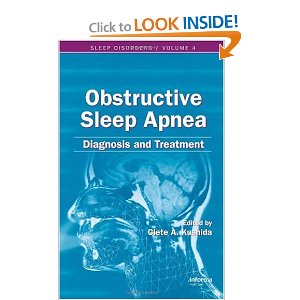 May 17th, 2011
May 17th, 2011 Sleep Apnoea Signs and Symptoms
Sleep apnoea is a major problem for some people although others may find snoring habits funny. Heavy and loud snoring are one of the most significant sleep apnoea signs and symptoms. This condition can lead to more serious heart problems and have other effects that can make one’s life more difficult. If your friends or partner complain that you snore loudly at night, it might be a good idea to have yourself checked for sleep apnoea.
There are 3 types of sleep apnea, namely Obstructive Sleep Apnea which is the most serious and common type; the Central Sleep Apnea; and Mixed Sleep Apnea. The sleep apnea signs and symptoms of each type may differ slightly. Testing and treatment for each type may likewise take different forms. The symptoms for each type are indicated in detail below.
Differences in Sleep Apnoea Symptoms
Although most adults may experience apnea episodes a few times in their life. People with more serious Obstructive Sleep Apnea will always experience pauses in breathing when they sleep. This type is more common among overweight people between the ages of 30 and 50. In many cases this happens several times a night. The most obvious of sleep apnea signs and symptoms is heavy snoring combined with pauses and gasping for air. When someone with Obstructive Sleep Apnea gasps for air he lets out a very loud snore or snorting sound.
This is where the Obstructive apnea type differs from the Central Sleep Apnea type. People with Central Sleep Apnea do not pause from breathing because of an obstruction in their throat like that of a patient with Obstructive Sleep Apnea. Sleep apnea sufferers with the Central apnea type stop breathing because the muscles in his chest and diaphragm relax making it hard for them to breath. They still end up gasping for air several times a night but will not snore due to the lack of obstruction in the airways. Many elderly people aged 60 and above suffer from this type of sleep apnea.
The third type of apnea is Mixed Sleep Apnea wherein symptoms of both the Central and Obstructive sleep apnea are combined. The Obstructive type is caused by physical characteristics like an obstruction in the throat by relaxed muscles. The Central Sleep Apnea type is more neurological in nature. Some studies have revealed that people who have Obstructive apnea for an extended period may eventually develop Central Sleep Apnea too, which is called Mixed Sleep Apnea that combines symptoms of both disorders.
Common Symptoms Sleep Apnoea
Common sleep apnea signs and symptoms for all 3 types are: headaches in the morning or severe migraine attacks from constant lack of sleep; lack of concentration at school or in the work place; a habit of napping during the day; irritability; learning and behavioural problems; dryness of the throat when you wake up in the morning; depression and mood swings in adults; and bed-wetting, hyperactivity and hostility in children.
In severe and long term conditions, sleep apnea can cause leg swelling, accidents at the work place, and falling asleep while driving behind the wheel. Most people who have this condition are not even aware that they have it. Often times it is the person around the patient who is able to tell that he has sleep apnea. If you notice a change in behaviour and sleep patterns in your partner, friend or family member, you should observe that person more closely.
If you sleep in the same room with someone you suspect has sleep apnea, observe his breathing and snoring habits, try to notice if he wakes up gasping for air whether he snores or not. Listen to his breathing and snores and take note of any changes in rhythm and loudness of the snore. If you suspect that a family member or friend has some type of sleep apnea, he should undergo sleep testing like a polysomnography or PSG which is performed at a sleep clinic.

